

SPECIAL REPORT: ON THE DESTRUCTION OF THE NORTHWEST PALACE AT NIMRUD
U. S. DEPT. COOPERATION AGREEMENT NUMBER: S-IZ-100-17-CA021
BY Michael Danti, Scott Branting, Tate Paulette, and Allison Cuneo
Initial Release: May 5, 2015
DOWNLOAD: REPORT
* This report is based on research conducted by the “Safeguarding the Heritage of the Near East Initiative,” funded by the US Department of State. Monthly reports reflect reporting from a variety of sources and may contain unverified material. As such, they should be treated as preliminary and subject to change.
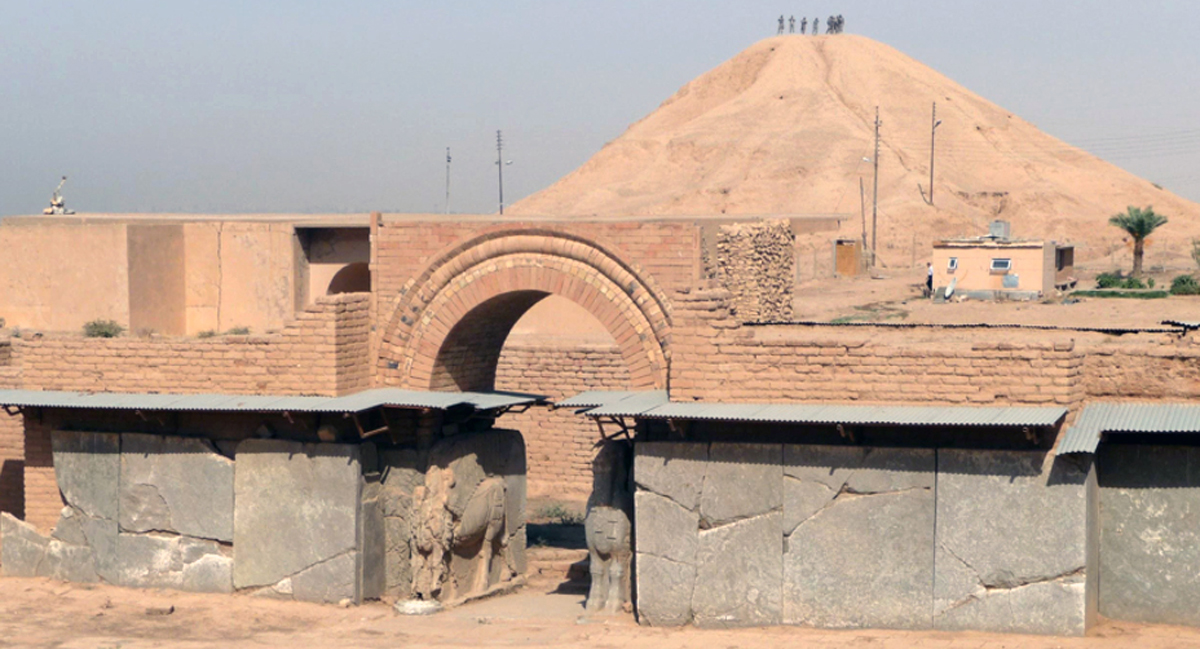
Nimrud, Northwest Palace (photo by Col. Mary Prophit, U.S. Army Reserve, Oct. 2009)
A video released by ISIL on April 11, 2015, provided vivid and shocking documentation of the deliberate destruction of relief sculpture and standing architecture at the famous archaeological site of Nimrud, located in northern Iraq near the city of Mosul. The video documents ISIL militants vandalizing, smashing, and piling up relief slabs using hand tools, power tools, and vehicles; it then shows the detonation of the relief slabs and large parts of the Northwest Palace using a series of barrel bombs. Given the unconfirmed reports and speculation that preceded the release of the video and the high-profile media coverage that has followed in its wake, it is worth reviewing the basic facts of the situation. This report provides a brief introduction to the site of Nimrud and summarizes the current state of knowledge regarding the destruction of the Northwest Palace.
Nimrud (ancient Kalhu, Calah) is located in northern Iraq, approximately 30 km southeast of Mosul in Ninawa Governorate on the east bank of an ancient bed of the Tigris River. The site was occupied from the 6th millennium BCE through at least the Hellenistic period, but it is best known as capital of the Neo-Assyrian empire from the reign of Ashurnasirpal II (883–859 BCE) up to the reign of Sargon II (721–705 BCE), who built a new capital at Khorsabad (ancient Dur Sharrukin). The Neo-Assyrian city, which covered at least 360 hectares (890 acres), was surrounded by a 7.5 km-long tower wall and was dominated by a 24-hectare (60-acre) walled Acropolis that lay near the southwestern corner of the city. The so-called Northwest Palace, located at the northwestern corner of the Acropolis, was built by Ashurnasirpal II to serve as royal residence and administrative center of the Assyrian empire. The walls of this massive structure (at least 120 x 200 meters in area) were lined with stone reliefs that depicted hunting scenes, battles, processions, and ritual ceremonies, typically accompanied by a standardized cuneiform inscription describing Ashurnasirpal’s conquests, as well as the building of Nimrud and the palace itself. Entranceways were guarded by colossal, human-headed, winged bulls or lions known as lamassu. Many of the reliefs and lamassu uncovered at the site were exported from Iraq and now reside in foreign museums. Others, however, were on display at the site within the partially reconstructed Northwest Palace.
The area surrounding the site of Nimrud came under ISIL control as a result of the group’s invasion of northern Iraq in June 2014. Unconfirmed reports of damage and possible ISIL activity at Nimrud appeared as early as late January 2015. Concern about the potential targeting of the site by ISIL then rose significantly in late February, following the release of a video showing the deliberate, performative destruction of objects in the Mosul Museum and at nearby Nineveh. On March 5, 2015, reports suggested that Nimrud had indeed been attacked by ISIL. On March 7, 2015, further reports suggested that ISIL militants were moving construction vehicles and equipment to the site. On April 11, 2015, ISIL then released a video showing the deliberate vandalism and destruction of relief sculpture at the site, followed by the detonation of the Northwest Palace using a series of barrel bombs arranged in a line in front of a row of relief panels. Unconfirmed reports have suggested that the detonation of the palace took place on April 2, 2015, but the timeline of events leading up to the demolition of the Northwest Palace remains uncertain.
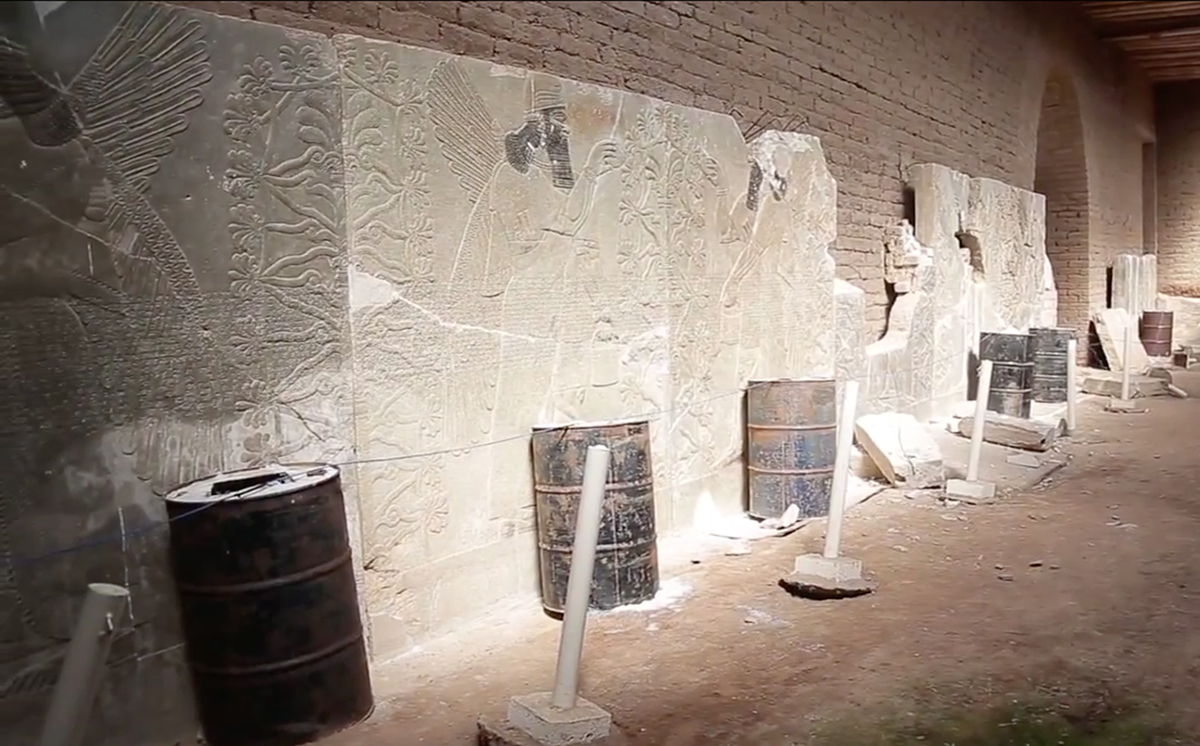
Nimrud, Northwest Palace, barrel bombs arranged in front of relief panels (still image from video released by ISIL on April 11, 2015)
Satellite imagery can provide further information about the nature and timing of the destruction events at Nimrud. It is important to emphasize, however, that satellite imagery is not available on a day-by-day basis and that even the best available images offer only limited resolution. With these important caveats in mind, the ASOR Cultural Heritage Initiatives team has analyzed a series of DigitalGlobe images in order to establish some chronological benchmarks for the destruction events that took place at Nimrud. Four particularly useful images are included here, identified by the date on which they were taken.
- February 26, 2015: This image shows no obvious, recent damage to the site.
- March 7, 2015: This image shows that a road has been cut through the modern wall that runs between the two side doors of the Throne Room of the Northwest Palace. The central entrance to the Throne Room was originally located in this area but has since eroded away; the space was closed off by a modern wall when the palace was restored. The image also shows a pile of rubble outside the Throne Room in the outer courtyard. The pile appears to include too much material to have been generated by the destruction of the modern wall alone and probably includes fragments of destroyed sculpture (as shown in this location in the ISIL video). The image also shows evidence for disturbance within the Throne Room, directly in front of relief slabs 12–15, the best-preserved relief sculptures excavated in the Throne Room. The disturbance suggests that these relief slabs may have been removed or demolished, most likely using mechanized equipment. The absence of further evidence for heavy disturbance elsewhere in the palace suggests that mechanized equipment may not have been brought into these other areas. Damage done below the shed roof using hand-held tools such as sledgehammers or jackhammers would not, however, be visible in the satellite imagery.
- April 1, 2015: This image shows the palace still intact, but, again, any further damage done using handheld equipment would not necessarily be visible in the image.
- April 17, 2015: This image shows the palace in ruins, following the detonation of the barrel bombs shown in the ISIL video.
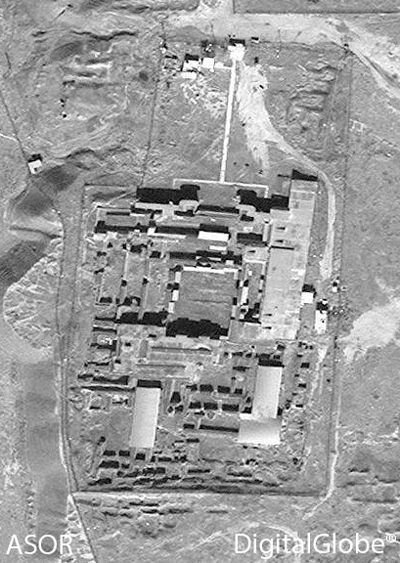
A) Nimrud, Acropolis, no recent damage visible (DigitalGlobe; taken February 26, 2015)
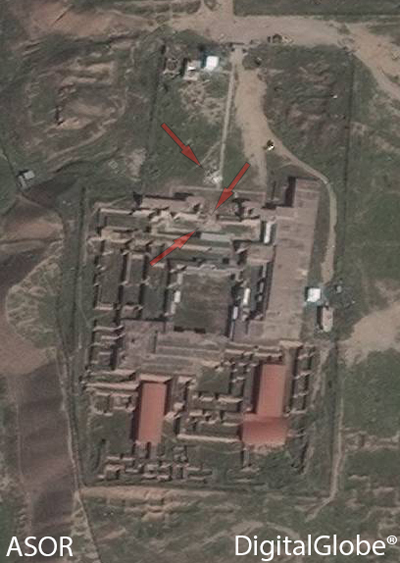
B) Nimrud, Northwest Palace, arrows point to rubble pile, cut in modern wall, and disturbance in Throne Room (DigitalGlobe; taken March 7, 2015)
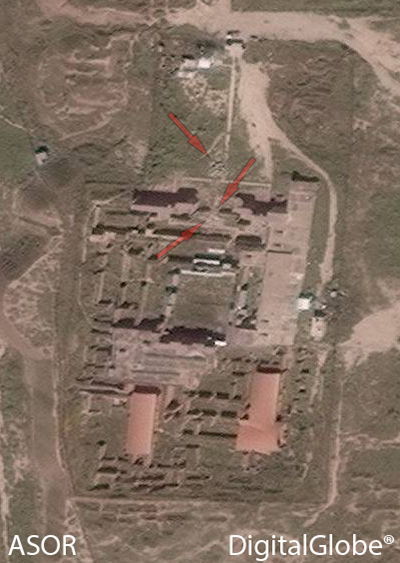
C) Nimrud, Northwest Palace, arrows point to rubble pile, cut in modern wall, and disturbance in Throne Room (DigitalGlobe; taken April 1, 2015)
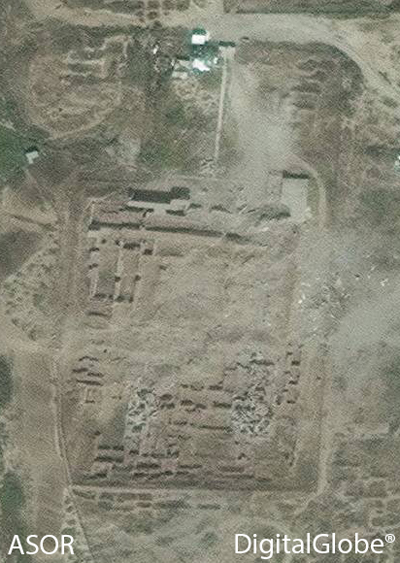
D) Nimrud, Northwest Palace, showing the palace in ruins following the detonation of barrel bombs by ISIL (DigitalGlobe; taken April 17, 2015)
Analysis of these satellite images suggests that the events shown in the ISIL video probably took place on (at least) two separate occasions. If the pile of rubble visible in the DigitalGlobe image taken on March 7, 2015, is the same as the pile of relief panels shown in the ISIL video released on April 11, 2015, then the piling up of these relief panels must have taken place prior to March 7, 2015. The detonation of the Northwest Palace, on the other hand, must have taken place after April 1, 2015, when a satellite image shows the palace still intact, and before April 11, when the ISIL video was released. The satellite image taken on April 17, 2015, provides further confirmation for the destruction of the Northwest Palace, as shown in the video.
For further details about the site of Nimrud and the destruction of the Northwest Palace, see the following ASOR Cultural Heritage Initiatives Weekly Reports:
Weekly Report 31 (pp. 82–109)
Weekly Report 34 (pp. 53–85)
Weekly Report 36 (pp. 34–52)